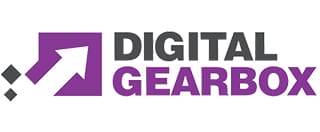In the world of marketing, goal-setting should be considered throughout the year, in particular when approaching holiday seasons, such as Christmas.
Unfortunately, we see too many businesses running advertisements for their business without any goals for that activity in place; which they are running simply because they know they need to advertise their business in the lead up to Christmas, or because someone came along at the right time and offered them a quick or cheap solution to doing it.
However, without defining what you want to achieve from the Christmas marketing activity and setting some measurable goals around it, it is difficult to determine whether it is the right move for your business.
This article will specifically explain how to set and measure Google Ads goals in the lead up to the Christmas period, and the importance of doing so.
The key to running Google Ads effectively is to understand what constitutes that success in accordance with your predetermined parameters such as cost, and campaign length.
Got a £10,000 monthly budget? Great – you can expect a high volume of traffic.
£100? It may be slightly more challenging.
When you know what to expect and manage those expectations alongside, not only are you able to achieve your more realistic goals but you’ll also gain a more in-depth understanding of how pay-per-click platforms tend to work in competitive periods.
Setting SMART goals
The SMART framework for goal setting is a simple, easy to remember framework which can be utilised for your Christmas Google Ads marketing.
SMART is an acronym for the different elements that should make up your goal, in order to be clear and reachable, which are:
- Specific (simple, sensible, significant).
- Measurable (meaningful, motivating).
- Achievable (agreed, attainable).
- Realistic (reasonable, realistic and resourced, results-based).
- Time-bound (time-based, time-limited, time/cost limited, timely, time-sensitive).
While it may seem obvious to choose what your Key Performance Indicators (KPIs) are before you embark on your Christmas marketing, but you’d be amazed at the number of people who don’t have a clue.
Having a clear-cut sense of what success will look like before you begin makes the process markedly more simple when you come to review your activity and aren’t sure whether that 40% click-through rate and 1 conversion is fab or a bit of a flop.
Measuring your Google Ads goals with conversion tracking
Next, you need to consider how you will measure that success, as without defining this you won’t know whether you have reached your goal or not.
Thankfully, Google Ads’ platform allows you to set these up as conversions so that you can see within your account when that action occurs.
Setting up your campaigns to measure conversions will normally require some additional set up in your account, normally in the form of adding some additional code onto your website to tell Google when certain pages are reached, or actions performed; however it an important step that should not be left out to save time, or to get campaigns running quickly.
By getting the conversion tracking set up prior to hitting the launch button, you will be able to understand which campaigns, ads and keywords are working and which ones aren’t.
Having this information will allow you to then allocate the budget to the most profitable areas, whilst you pause or optimise the areas that don’t perform so well.
If you already have goals set up in your Google Analytics account you can also import these as conversions directly into your Google Ads account.
As standard we would always set up Ads conversion tracking for all the clients we set up campaigns for. If you need further help with this please do get in touch or check out the Google Ads online help for setting up conversion tracking.
Setting expectations and your budget
Considering whether your goal is achievable is the hardest part of SMART goal setting for Google Ads.
Whilst there are industry benchmarks and tools out there for telling you the expected monthly search volumes and what the predicted cost per click will be, unfortunately, you won’t know the actual situation for your business until you push your campaigns live.
How much you pay per click, in the end, is impacted by the competition at the time, and your quality score.
In addition, your website needs to be playing its part in the process to help you achieve your goal, so if your website visitor levels have been low prior to running any campaigns, there are many unknowns about how people will interact with it.
One of the most common failures of Google Ads campaigns that we see comes from businesses failing to allocate realistic budgets to match their goals.
Define how many conversions you are wanting to generate, and then multiplying that by the max. cost you are happy to pay to get that conversion to determine your click budget.
Setting a realistic max. cost per conversion you are happy with is key.
Use your margins, existing conversion rates, industry benchmarks and experience to determine this figure – what is the value where it wouldn’t be worth the investment to generate the conversion?
Whilst you can aim to get a cost per conversion lower than this, defining this for your initial budget setting will allow you to at least test whether it is a feasible advertising channel for your business or not.
A budget setting example…
To put this into a real example, let’s say you run a cleaning business, and you have determined that the max. cost per conversion you would be happy to pay to get a lead conversion online was £40.
You’re hoping to find a marketing solution that brings in at least 5 new leads a week, or 25 a month. In this scenario, you would multiply the £40 by 25 which would give you an initial advertising budget of £1,000/month.
Now if that seemed too much to initially invest in testing, you can reduce the budget by reducing your goal, so you could start with a budget of £600 instead, and then adjust your expectations to generate 15 conversions instead.
You may find you are able to get the 25 within the £600 budget, but only by defining realistic limits can you really determine whether your goals can be achieved or not.
Setting a time to review your Google Ads goals
So many Google Ads newbies become frustrated when they’ve been running a brand new account for three weeks and they haven’t yet reached their goal of 100 sales, or 3,000 clicks.
When data has had such a short amount of time to come in and then for you to optimise following that, it becomes apparent that progress might initially be slow.
It is important to be patient with Google Ads and not expect a miracle overnight.
Whilst theoretically you can start getting results instantly with Google Ads, the reality is it might take a bit of optimisation to get quality results.
Patience is a virtue, as they say.
Therefore make sure you define a realistic time-bound point where it is appropriate to review whether you have achieved the goal or not.
We find with Google Ads accounts it can take up to 3 months to have enough time to gather the initial data and then optimise to really answer the question of whether it can work for a business or not.
Google Ads is easy to set up.
It’s not rocket science to manage, either.
But sometimes it’s hard to understand what you really want from it.
This is why it is so crucial to set these Google Ads goals early on in the game.
Google Ads performance can sometimes fluctuate, especially if your budget is not astronomical.
But if you start as you mean to go on and understand how the platform can be used incredibly well when expectations are managed and a bit of patience is given to allow the data to optimise, it’ll be a blast to work with!









